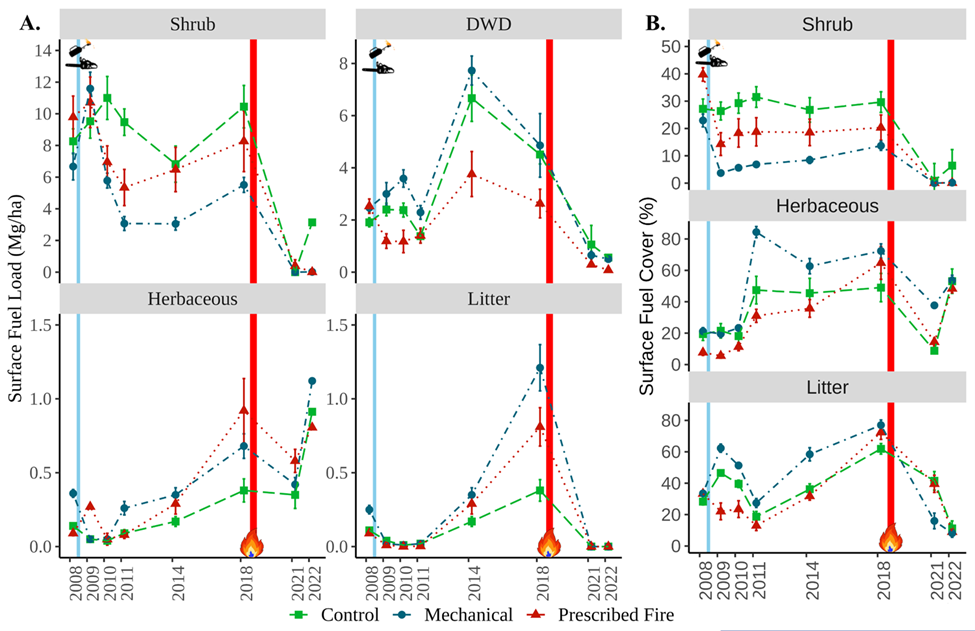Wildfire
Almost half of the SageSTEP plots have experienced complete or partial burning from wildfires since initial project treatments were implemented. This provides an opportunity to understand whether fuel treatments resulted in differential fire behavior, fire effects, and post-fire recovery
Latest Resources on Fire
View synthesis. Our review revealed tradeoffs in woody fuel treatments between reducing canopy fuels vs. increasing understory herbaceous vegetation (fuels) and fire behavior. In pinyon-juniper expansion areas, all treatments decreased crown fire risk. Prescribed fire and cut and broadcast burn treatments reduced woody fuels long-term but had higher risk of invasion. Mechanical treatments left understory…
View article. Increased herbaceous surface fuel following prescribed fire treatments increased the modeled rate of surface fire spread (ROS) 21-fold and nearly tripled fame length (FL) by year ten post-treatment across all expansion phases. In mechanical treatments, modeled ROS increased 15-fold, FL increased 3.8-fold, and reaction intensity roughly doubled in year ten post-treatment compared to…
View article. Increased fire size and frequency coupled with annual grass invasion pose major challenges to sagebrush ecosystem conservation, which is currently focused on protecting sagebrush community composition and structure. A common strategy for mitigating potential fire is to use fuel treatments that alter the structure and amount of burnable material, thus reducing fire behavior…

